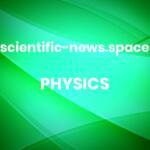Harvard astrophysicist Avi Loeb has drawn criticism for suggesting a weird object passing through the solar system could be an alien spacecraft. But he insists we must keep an open mind when nature throws us a curveball
IN 2017, something strange came hurtling through our cosmic neighbourhood. Astronomers only spotted it once it was already on its way out, so they didn’t get a proper look. But from the few observations we did get, it was clear that the object wasn’t from around here – its trajectory indicated that it came from another star system. It was dubbed ‘Oumuamua, which means “scout” in Hawaiian, and categorised as the first interstellar object we have ever seen in our cosmic neighbourhood.
Not long after ‘Oumuamua was spotted, Avi Loeb, an astrophysicist at Harvard University, made waves by proposing that it may be a piece of alien technology. “‘Oumuamua may be a fully operational probe sent intentionally to Earth vicinity by an alien civilization,” Loeb wrote in a pre-print paper.
It is certainly weird. Observations suggested it is likely to be either flat or cigar-shaped, tumbling end over end every 7 hours or so and accelerating at a pace seemingly greater than could be accounted for by gravitational forces alone. Loeb’s colleagues have since come up with various natural explanations for what we glimpsed of ‘Oumuamua’s features, including the idea that it is some sort of giant fractal snowflake. But he is adamant we should at least be open to the possibility that it could be evidence of the existence of extraterrestrial civilisations.
Loeb has now written a book about it called Extraterrestrial: The first sign of intelligent life beyond Earth. Here, he tells New Scientist about the possibility of advanced alien life and how humans might respond to it.
Leah Crane: You say …
Source: Humans - newscientist.com



